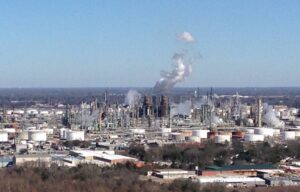A new study has linked exposure to particulate matter (PM) with hair loss in men.
Researchers from South Korea exposed cells from the human scalp at the base of hair follicles to various concentrations of PM10-like dust and diesel particulate.
After 24 hours, the researchers performed a scientific process called western blotting, to study levels of specific proteins in the cells. The results showed that the presence of PM10 and diesel particulate decreased levels of β-catenin, the protein responsible for hair growth and morphogenesis.
The study also revealed that the levels of three other proteins (cyclin D1, cyclin E and CDK2), which are responsible for hair growth and hair retention, were decreased by PM10-like dust and diesel particulate in a dose-dependent manner, meaning that the greater the level of pollutant, the greater the decrease in proteins was found.
Lead researcher, Hyuk Chul Kwon from the Future Science Research Centre in the Republic of Korea, said: ‘While the link between air pollution and serious diseases such as cancer, COPD and CVD are well established there is little to no research on the effect of particular matter exposure on the human skin and hair in particular.
‘Our research explains the mode of action of air pollutants on human follicle dermal papilla cells, showing how the most common air pollutants lead to hair loss.’
The South Korean researchers will present the study today (October 9) at the 28th EADV Congress in Madrid.
In 2008, academics from the University of Lincoln first hypothesised that environmental factors such as air pollution could be linked to the onset of male pattern baldness.
According to the British Association of Dermatologists, male pattern hair loss (MPHL) is the most common type of hair loss in men. It is also known as androgenetic alopecia and it affects about 50% of men over the age of 50. Approximately 95% of men can attribute it to their genes.
















